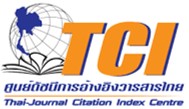Self-cleaning SiO2/TiO2/PMMA nanocomposite films fabricated by spin coating technique: Effect of different spin speed and film layers
DOI:
https://doi.org/10.55674/jmsae.v12i3.252043Keywords:
Nanocomposite, PMMA, SiO2/TiO2 nanocomposite, Spin coating, SonochemicalAbstract
This research aims to develop the self-cleaning efficiency of silicon dioxide/titanium dioxide/methyl methacrylate (SiO2/TiO2/PMMA) nanocomposite films proved by optical and structural properties. The SiO2/TiO2/PMMA nanocomposite films were prepared by spin coating technique with the crucial parameters of spin speed and film layers. The ratio of SiO2:TiO2 in SiO2/TiO2 nanocomposite was conducted at 1:1 by sonochemical process and loading at 1 wt.% in PMMA matrix. Spin speed of SiO2/TiO2/PMMA nanocomposite films in coating process was conducted at 1000, 2000, and 3000 rpm with film growth at 2 layers. Meanwhile, the different film layers of the nanocomposite film were selected as other crucial parameter in spin coating technique and studied at 1, 2, and 3 layers with spin speed 2000 rpm. Surface morphologies, cross-section and element contents of SiO2/TiO2/PMMA nanocomposite films with different spinning speed and film layers were monitored by the photographs, field emission scanning electron microscope (FE-SEM) and energy dispersive X-ray spectroscopy (EDS). Moreover, optical property in transmission mode of SiO2/TiO2/PMMA nanocomposite films was characterized by UV-VIS spectrophotometer. Furthermore, the contact angle measurement o f SiO2/TiO2/PMMA nanocomposite films can identify to hydrophilic properties on the film surface. Therefore, the improvement of self-cleaning property on SiO2/TiO2/PMMA nanocomposite film was occurred by the optimized conditions of spinning speed at 2000 rpm and film growth at 2 layers by spin coat technique.
References
F. Mohammadi, S. M. Mirabedini, K. khodabakhshi, S. Pazokifard, Degradation of pollutants in solid and gas states using waterborne acrylic nanocomposite paints, Build. Environ. 221 (2022) 109327.
S. Nundy, A. Ghosh, T. K. Mallick, Hydrophilic and superhydrophilic self-cleaning coatings by morphologically varying ZnO microstructures for photovoltaic and glazing applications, ACS. Omega. 5 (2020) 1033 – 1039.
S. Banerjee, D. D. Dionysiou, S. C. Pillai, Self-cleaning applications of TiO2 by photo-induced hydrophilicity and photocatalysis, Appl. Catal. B. 176-177 (2015) 396 – 428.
M. Boutamart, S. Briche, K. Nouneh, S. Rafqah, Y. Agzenai, Transparent and self-cleaning surfaces based on nanocomposite sol-gel coatings, Chemistry Select. 5 (2020) 8522 – 853.
S.Z. Qiao, J. Liu, G.Q.M. Lu, Chapter 21 Synthetic Chemistry of Nanomaterials, Modern Inorganic Synthetic Chemistry. (2017) 613 – 640.
L. Yang, S. Zhou, L. Wu, Preparation of waterborne self-cleaning nanocomposite coatings based on TiO2/PMMA latex, Prog. Org. Coat. 85 (2015) 208 – 215.
A. S. Sarkın, N. Ekren, Ş. Sağlam, A review of anti-reflection and self-cleaning coatings on photovoltaic panels, Solar. Energy. 199 (2020) 63 – 73.
G. Demircan, E. F. Gurses, A. Acikgoz, S. Yalcin, B. Aktas, Effects of spin coating parameters on stress, electrical and optical properties of multilayer ZnO thin film prepared by sol–gel, Mol. Cryst. Liq. Cryst. 709(1) (2020) 61 – 69.
C. K. Söz, E. Yilgör, I. Yilgör, Influence of the average surface roughness on the formation of superhydrophobic polymer surfaces through spin-coating with hydrophobic fumed silica, Polymer. 62 (2015) 118 – 128.
S. K. Samal, S. Mohanty, S. K. Nayak, Superhydrophobic polymer coatings, First ed., Elsevier, Cambridge 2019.
A. Rosales, L. O. Frade, I. E. M. Ramirez, L. A. Godínez, K. Esquivel, Self-cleaning of SiO2-TiO2 coating: effect of sonochemical synthetic parameters on the morphological, mechanical, and photocatalytic properties of the films, Ultrason. Sonochem. 73 (2021) 105483.
M. Ranjbar, M. A. Taher, A. Sam, Single-step synthesis of SiO2–TiO2 hydrophobic core–shell nanocomposite by hydrothermal method, J. Clust. Sci. 27 (2016) 583 – 592.
S. W. Heo, Ultra-flexible organic photovoltaics with nanograting patterns based on CYTOP/Ag nanowires substrate, Nanomaterials 10 (2020) 2185.
Y. Y. Liu, L. Q. Qian, C. Guo, X. Jia, J. W. Wang, W.H. Tang, Natural superhydrophilic TiO2/SiO2 composite thin films deposited by radio frequency magnetron sputtering, J. Alloys Compd. 479(1-2) (2009) 532 – 535.
E. Pakdel, W. A. Daoud, X. Wang, Self-cleaning and superhydrophilic wool by TiO2/SiO2 nanocomposite, Appl. Surf. Sci. 275 (2013) 397 – 402.

Downloads
Published
How to Cite
Issue
Section
License
Copyright (c) 2023 Journal of Materials Science and Applied Energy

This work is licensed under a Creative Commons Attribution-NonCommercial-NoDerivatives 4.0 International License.







